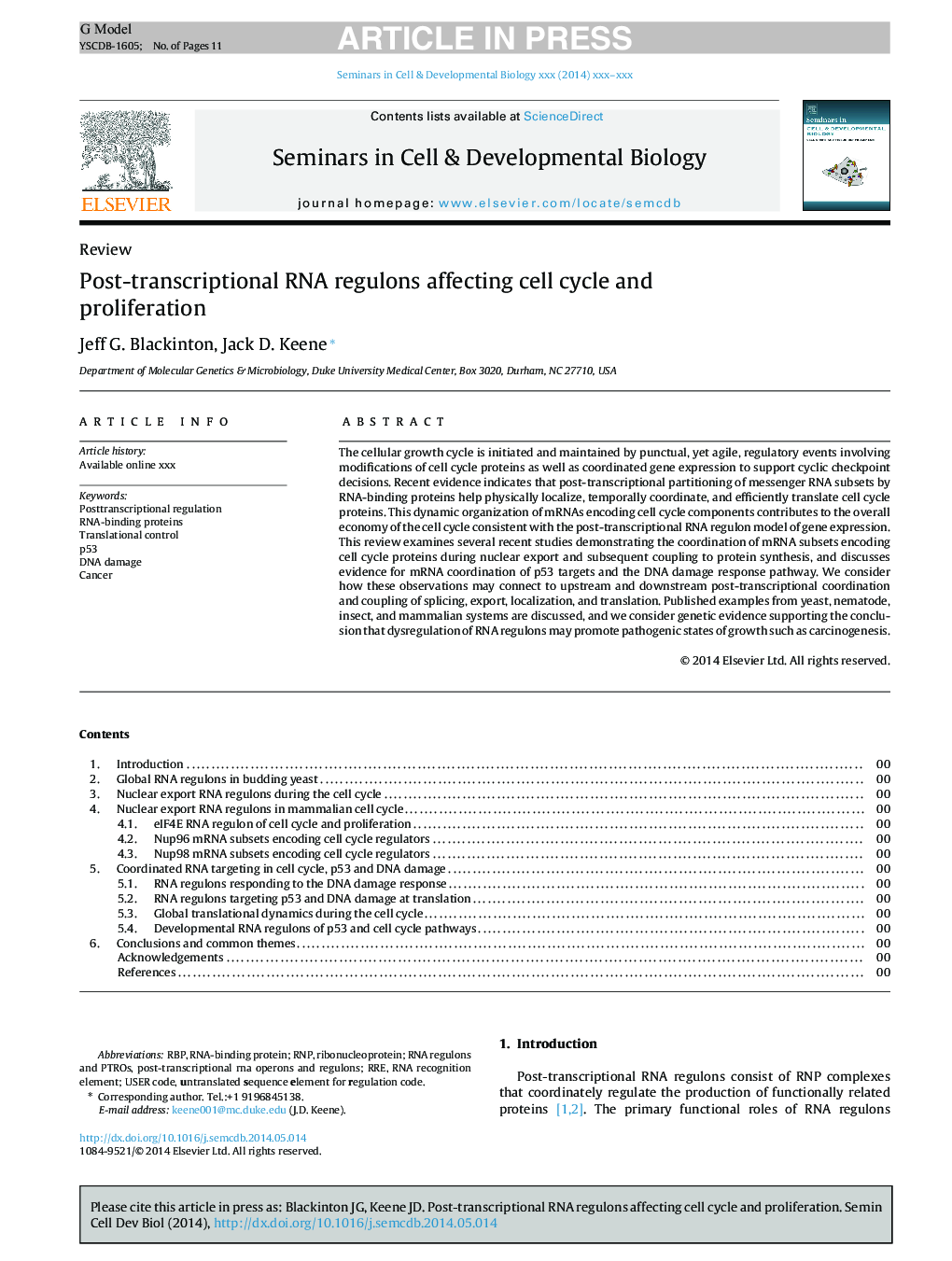| Article ID | Journal | Published Year | Pages | File Type |
|---|---|---|---|---|
| 8480602 | Seminars in Cell & Developmental Biology | 2014 | 11 Pages |
Abstract
The cellular growth cycle is initiated and maintained by punctual, yet agile, regulatory events involving modifications of cell cycle proteins as well as coordinated gene expression to support cyclic checkpoint decisions. Recent evidence indicates that post-transcriptional partitioning of messenger RNA subsets by RNA-binding proteins help physically localize, temporally coordinate, and efficiently translate cell cycle proteins. This dynamic organization of mRNAs encoding cell cycle components contributes to the overall economy of the cell cycle consistent with the post-transcriptional RNA regulon model of gene expression. This review examines several recent studies demonstrating the coordination of mRNA subsets encoding cell cycle proteins during nuclear export and subsequent coupling to protein synthesis, and discusses evidence for mRNA coordination of p53 targets and the DNA damage response pathway. We consider how these observations may connect to upstream and downstream post-transcriptional coordination and coupling of splicing, export, localization, and translation. Published examples from yeast, nematode, insect, and mammalian systems are discussed, and we consider genetic evidence supporting the conclusion that dysregulation of RNA regulons may promote pathogenic states of growth such as carcinogenesis.
Keywords
Related Topics
Life Sciences
Biochemistry, Genetics and Molecular Biology
Cell Biology
Authors
Jeff G. Blackinton, Jack D. Keene,
